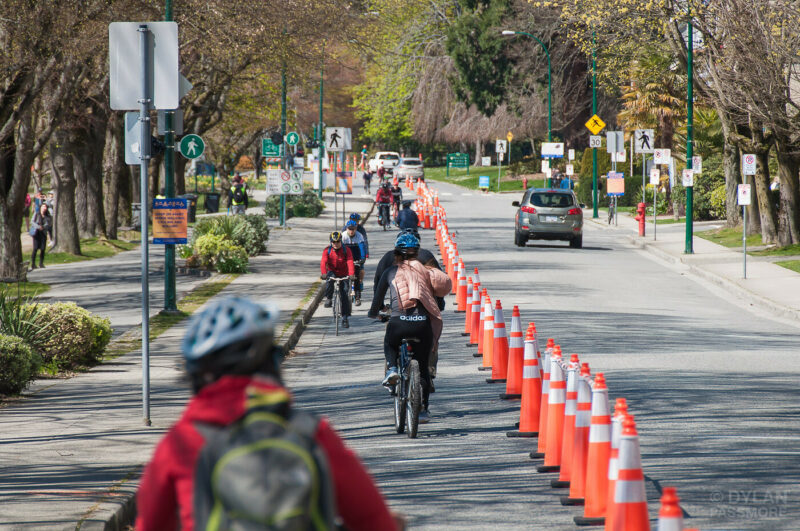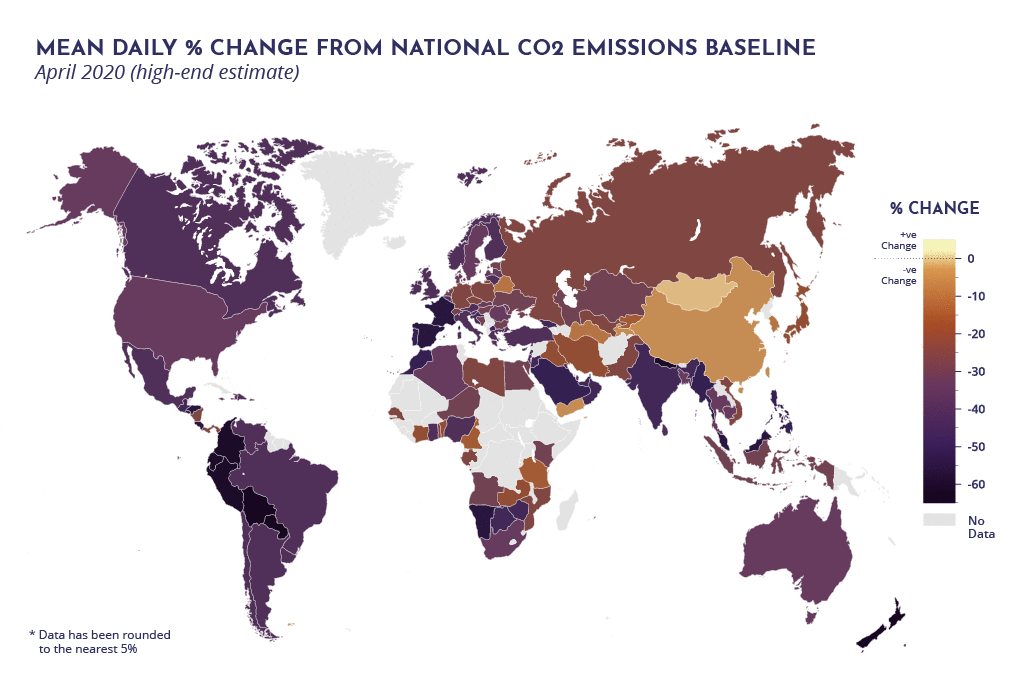COVID-19 recovery choices shape future climate
Share

The researchers warn that even with some lockdown measures staying in place to the end of 2021, without more structural interventions global temperatures will only be roughly 0.01°C lower than expected by 2030.
However, the international study, led by the University of Leeds, with contributions of Climate Analytics’s researchers as part of the CONSTRAIN project, estimates that including climate policy measures as part of an economic recovery plan with strong green stimulus could prevent more than half of additional warming expected by 2050 under current policies.
This would provide a good chance of global temperatures staying below the Paris Agreement’s aspirational 1.5˚C global warming limit and avoiding the risks and severe impacts that higher temperatures will bring.
Professor Piers Forster from the University of Leeds began working with his daughter, Harriet, after her A levels were cancelled. They analysed the newly accessible global mobility data from Google and Apple. They calculated how 10 different greenhouse gases and air pollutants changed between February and June 2020 in 123 countries. They then brought in a wider team to help with the detailed analysis.
The team’s findings, published today in Nature Climate Change, detail how despite carbon dioxide (CO2), nitrogen oxides (NOx) and other emissions falling by between 10-30% globally, through the massive behavioural shifts seen during lockdown, there will be only a tiny impact on the climate, mainly because the decrease in emissions from confinement measures is temporary.

Change in CO2 emissions compared with national baselines in February, as the virus spread in China, and then in April, when lockdown measures were in force across the world.
The researchers also modelled options for post-lockdown recovery, showing that the current situation provides a unique opportunity to implement a structural economic change that could help us move towards a more resilient, net-zero emissions future.
Study lead author Professor Piers Forster, director of the Priestley International Centre for Climate at Leeds and Principal Investigator of the CONSTRAIN consortium, said: “The choices made now could give us a strong chance of avoiding 0.3˚C of additional warming by mid-century, halving the expected warming under current policies. This could mean the difference between success and failure when it comes to avoiding dangerous climate change.
“The study also highlights the opportunities in lowering traffic pollution by encouraging low emissions vehicles, public transport and cycle lanes. The better air quality will immediately have important health effects – and it will immediately start cooling the climate.”
Study co-author Harriet Forster, who has just completed her studies at Queen Margaret’s School, said: “Our paper shows that the actual effect of lockdown on the climate is small. The important thing to recognise is that we’ve been given a massive opportunity to boost the economy by investing in green industries – and this can make a huge difference to our future climate.
“I’m going to London next month to study art but I also did chemistry at A-level so was glad to use what I learned in my chemistry classes to do something useful.”
Study co-author Corinne Le Quéré from the University of East Anglia said: “The fall in emissions we experienced during COVID-19 is temporary and therefore it will do nothing to slow down climate change, but the Government responses could be a turning point if they focus on a green recovery, helping to avoid severe impacts from climate change.”
Study co-author Joeri Rogelj from the Grantham Institute – Climate Change and the Environment at Imperial College London said: “Both sobering and hopeful, the flash crash in global emissions due to lockdown measures will have no measurable impact on global temperatures by 2030; but the decisions we make this year about how to recover from this crisis can put us on a solid track to meet the Paris Agreement. Out of this tragedy comes an opportunity, but unless it is seized a more polluting next decade is not excluded.”
Study co-author Matthew Gidden from Climate Analytics, Berlin said: “The lasting effect of COVID-19 on climate will not depend on what happens during the crisis, but what comes after. “Stimulus focused on green recovery and low-carbon investment can provide the economic kick start needed while putting the world on track to meet climate pledges.”
Study co-author Professor Mathew Evans. From Wolfson Atmospheric Chemistry Laboratories, University of York and the National Centre for Atmospheric Science said: “The analysis of air quality observations from around the world showed us that the emissions reductions captured by Google and Apple’s mobility data were pretty close to those actually being experienced.”
Study co-author Christoph Keller from Goddard Earth Sciences, Technology and Research (GESTAR) based in the Global Modeling and Assimilation Office (GMAO) at NASA GSFC said: “The decrease in human activity in the wake of the COVID-19 pandemic has created a unique opportunity to better quantify the human impact on atmospheric air pollution.
“Near real-time analysis of observations, mobility data, and NASA model simulations offers quantitative insights into the impact of COVID-19 containment measures on air pollution. This study demonstrates how such information can help to advance our understanding of the complicated interactions between air quality and climate.”
More resources including Q&A and graphics
CONSTRAIN research update: COVID recovery choices shape future climate











